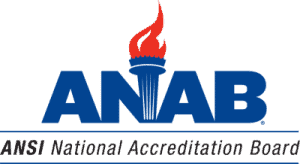Value of Accredited Healthcare Construction Credentials

Planned and unplanned healthcare construction, deconstruction, demolition, and renovation in the United States present many risks to the public. Construction personnel who work on healthcare facilities play a vital role in helping to address these risks and, as a result, protect the public. Infection, such as the COVID-19 pandemic, functioning of fire equipment and systems, utility services, noise, vibration, odors, delivery/handling/storage of supplies and materials, and ventilation are all important areas of concern.
How Many People Get Healthcare-Associated Infections?
For example, even prior to the COVID-19 pandemic, each year about two million people who utilized U.S. healthcare facilities contracted an infection. These healthcare-associated infections (HAIs) can prolong the recovery process, lengthen healthcare stays, and result in death. Tragically, over 70,000 die annually from HAIs, approximately twice the number killed each year in vehicular accidents.
Pre-Construction Risk Assessment / Infection Control Risk Assessment (PCRA/ICRA) Requirements
Construction and facility maintenance work adaptations must be given high priority to protect not only patients, but also healthcare facility staff, construction workers, visitors, and communities.[1]In response to these risks, The Joint Commission, the organization that accredits over 20,000 healthcare facilities in the U.S., requires hospitals, ambulatory health care centers, behavioral health care centers, and nursing care centers to employ nationally validated processes and protocols.
In a two-part article in “Environment of Care News”, a publication of The Joint Commission, five authors urged raising the bar on PCRA/ICRA requirements. They called for all construction and maintenance personnel participating in pre-construction, maintenance, and construction activities on healthcare facilities to demonstrate their competence by possessing a PCRA/ICRA, ANSI/ASTM-accredited credential.[2]
This is because now, and into the foreseeable future, these healthcare challenges are further exacerbated from catastrophic threats such as climate change, disasters, the emergence or reemergence of infectious diseases, antimicrobial resistance, and pollution.[3]
About ANAB Accreditation for Certificate Programs
The ANSI National Accreditation Board (ANAB) accredits assessment-based training certificates based on an American National Standard, ASTM E2659 – Standard Practice for Certificate Programs. This standard was developed in response to growing concerns relating to the quality of education/training programs. The standard provides a framework to deliver competency based high quality training and educational programs. It requires that a certificate program meet predefined industry requirements for content, employs a criterion referenced examination, and includes a mechanism for constant feedback for quality improvement.
Laws in Arizona, California, Hawaii, Illinois, New Mexico, Texas, and West Virginia, and some local jurisdictions require ANAB accreditation under ASTM E2659. ANAB is also recognized by the U.S. Department of Energy Home Energy Professional Certifications and Better Building Workforce Guidelines.
In line with these recognitions, it would be worthwhile for The Joint Commission to require ANAB’s accreditation to improve the competence of healthcare construction professionals.
Contributing Author: Grady O’Rear, President/CEO, Green Advantage, Inc.
Grady O’Rear is founding President/CEO of Green Advantage, Inc., an international non-profit organization that credentials building-related practitioners in state-of-the-art sustainable and resilient building means, methods, materials and best practices. Launched with US EPA funds, it is the longest standing green building construction personnel credentialing body in the US.
Grady does additional work developing healthcare, renewable energy and land conservation projects. He was the developer of EcoVillage of Loudoun County, Virginia and was the founding President/CEO of Way Station, Inc., a comprehensive, non-profit, mental health organization, named a “Point of Light” by the White House. Built in 1991, its national education and training center/rehabilitation facility for many years was considered one of the most energy efficient commercial buildings in the US. Grady holds a B.S. in Education and an M.A. in Psychology.
[1] Balestrieri,C., Haber, K., Haran, M., Marzo, S., and Sohl, J., Environment of Care News, The Joint Commission, “Mitigating Construction and Maintenance Risks, PCRA and ICRA—Procedures and Best Practices ” November and December, 2019, Volume 22, Issues 11 and 12.
[2] Ibid.
[3] Ibid.






